A visit to the Land of Thunder Dragon
Part one: The first impression, some noteworthy places, the houses, the locals, and the food
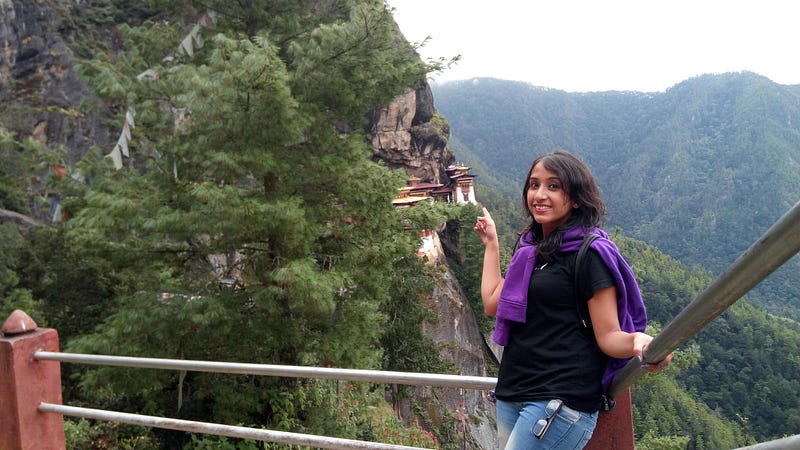
Part one: The first impression, some noteworthy places, the houses, the locals, and the food
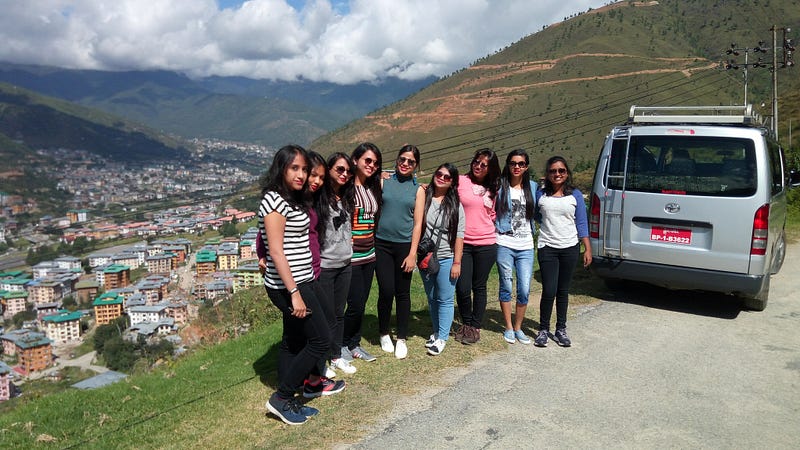
The first impression
It was September 23, 2017. A group of nine girls travelling through the night from Guwahati to New Alipurduar on a train, and then to Jaigaon by car. Jaigaon is a small town in West Bengal, crowded almost to the brim, its streets littered with discarded plastic packets and rolled up bits of paper, the roads clogged with cars and autorickshaws. While our group waited to get our currencies changed, I noticed a magnificent gateway decorated with ornate dragons that separated the two countries.
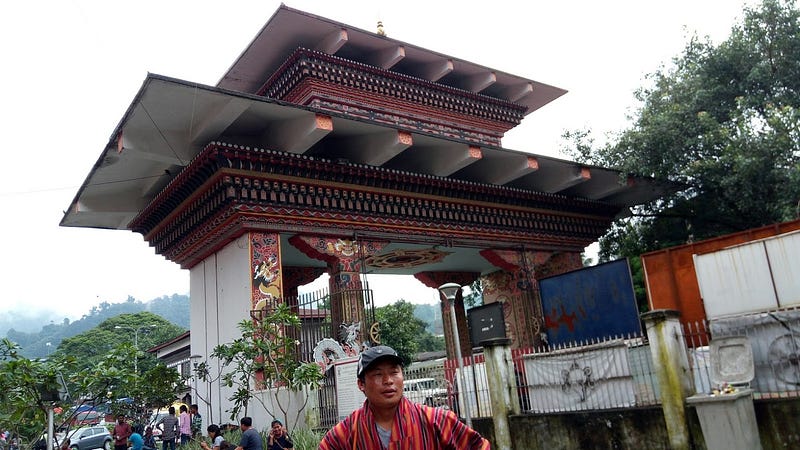
The sight of the beautiful structure got my heart racing. We were about to enter Bhutan through Phuentsholing — a border town bridging Jaigaon and the land of the Thunder Dragon.
The first thing I noticed after setting foot in Bhutan was the tranquillity in the air. After the hustle of the crowded West Bengal streets, the serenity of Phuentsholing was a welcome change. Although separated by a few hundred metres, the two cities were like two different worlds. I breathed in the peace and quiet of the country and opened my eyes to be mesmerised by the intricate patterns adorning the walls of the immigration office.
It was the month of September — the weather was neither too hot, nor too cold. It was drizzling slightly, but the rains only added to the beauty of the land, waking me up from my sleep-deprived state like nothing else.
Streetside sights
The ride along green mountainous roads peppered with quaint houses with intricate roof decor and graffiti on the walls was a rare treat.
The cab-driver told us the dragons painted on the walls had a special significance: because of Bhutan’s strategic location amid the tall Himalayas, it experiences a lot of thunder during the rainy season. Traditionally, the Bhutanese believed this thunder to be sound of dragons, thus making the country earn its moniker: The land of the Thunder Dragon. Till today, people decorate their walls with pictures of dragons as a harbinger of good luck.
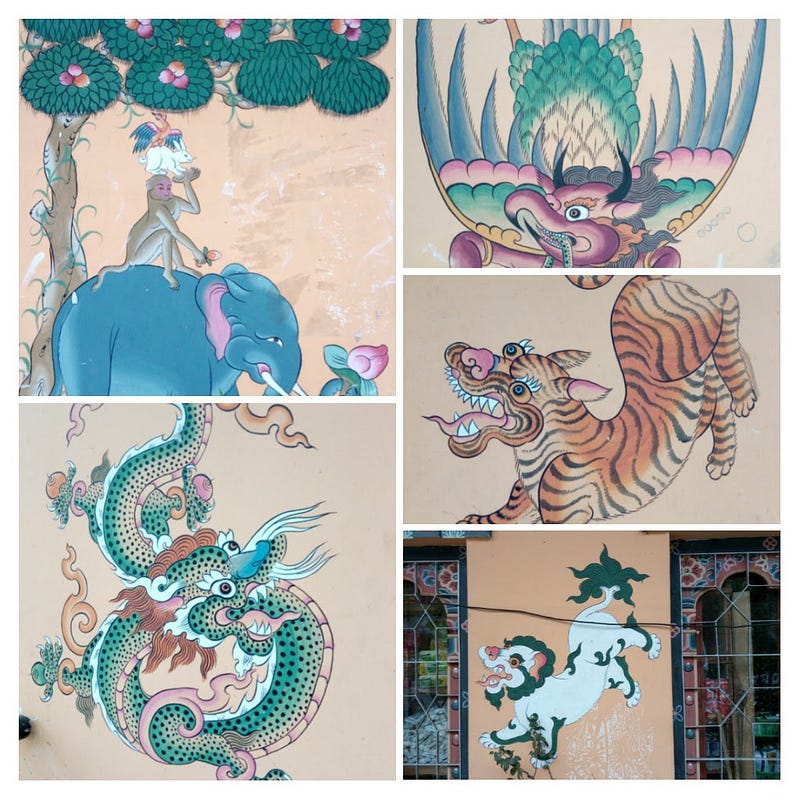
Apart from the dragons, another recurring wall decor among the Bhutanese was the phallus — an erect human penis. Local folklore believes that the penis can ward off evil spirits, keeping the family safe from the influence of black magic. Adhering to this custom, decorated phalluses are commonly seen in curio shops and as mantlepieces.
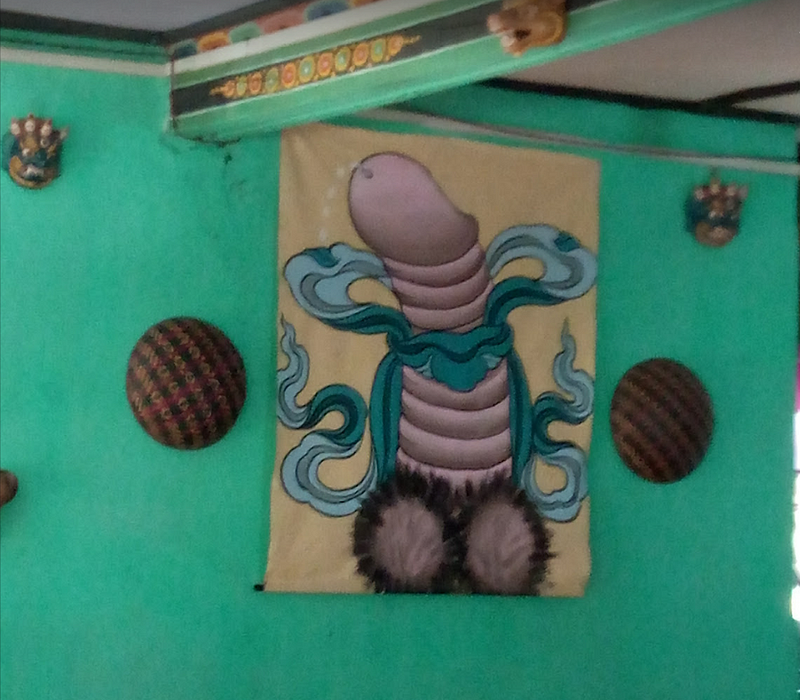
The monasteries
Bhutan is a paradise for lovers of architecture. The old monasteries (or dzongs, as they are known as in the local language) are rich with colours and intricate patterns on the ceilings. It is a treat to watch beautiful buildings popping out of the blue in the middle of a deserted street.
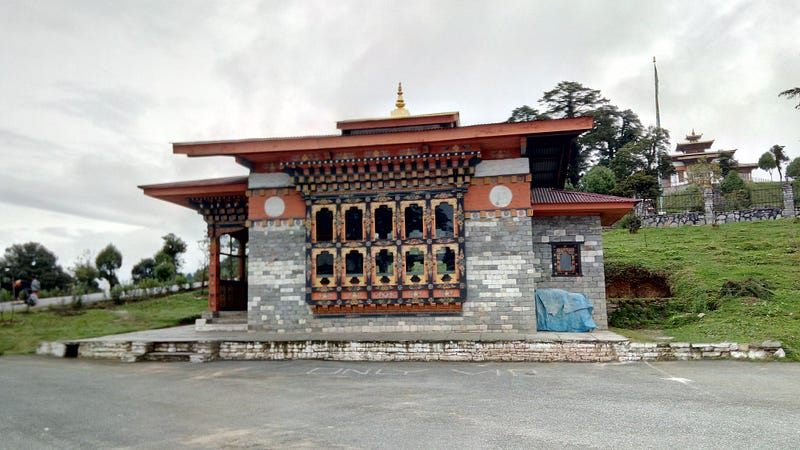
The most beautiful, no doubt, is the Tiger’s Nest or Taktsang Monastery, located atop a lush green mountain, accessible after a 5km trek on foot from Paro. The trekking trail itself is the highlight, with waterfalls, prayer wheels and colourful Buddhist prayer flags adorning the way. The first sight of the monastery nestled among outcrops of rock is a sight for sore eyes indeed.
(The trekking trail deserves a blog post of its own. I will write about the adventures soon)
Another beautiful monastery worth a visit is the Punakha Dzong in Paro Valley. Situated across a river and accessible only by a bridge on foot, this monastery serves as the winter palace of the royal family of Bhutan. The intricate paintings and the architecture of the fort make this place worth remembering.
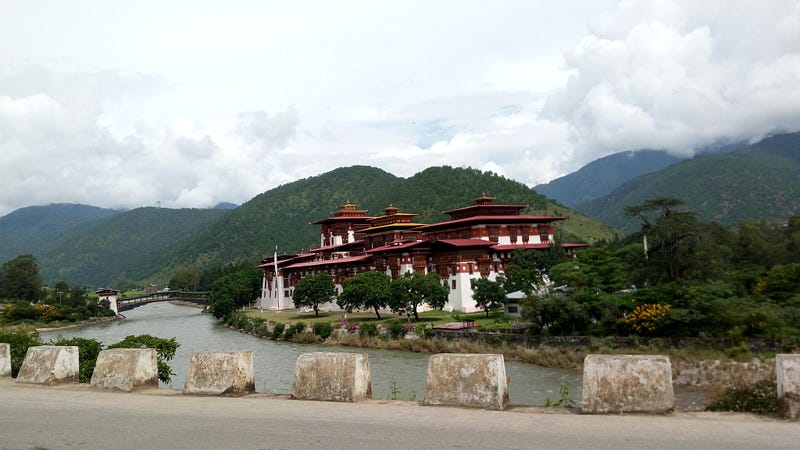
Other noteworthy places
The 169 feet tall Buddha Dordenma Statue, made of gold and bronze and built at the foot of the hills in Thimphu is visible from almost anywhere in the country’s capital. The most interesting part about this statue is that — the walls of the small monastery surrounding it are sparkling gold in colour and adorned with vivid paintings of animals in various poses.

Dochula Pass, a war memorial situated on the way to Punakha from Thimphu is a breathtaking sight, consisting of 108 Chortens or Stupas built in the memory of the brave Bhutanese soldiers. The snow-capped Gangkar Puensum peak in the background makes this one of the most beautiful locations in the country.
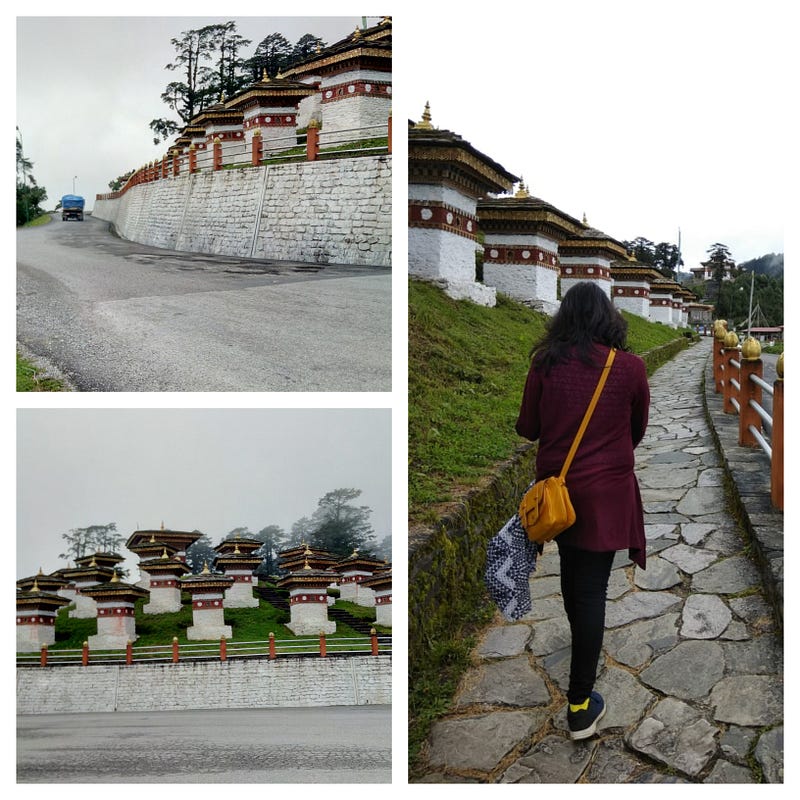
The food
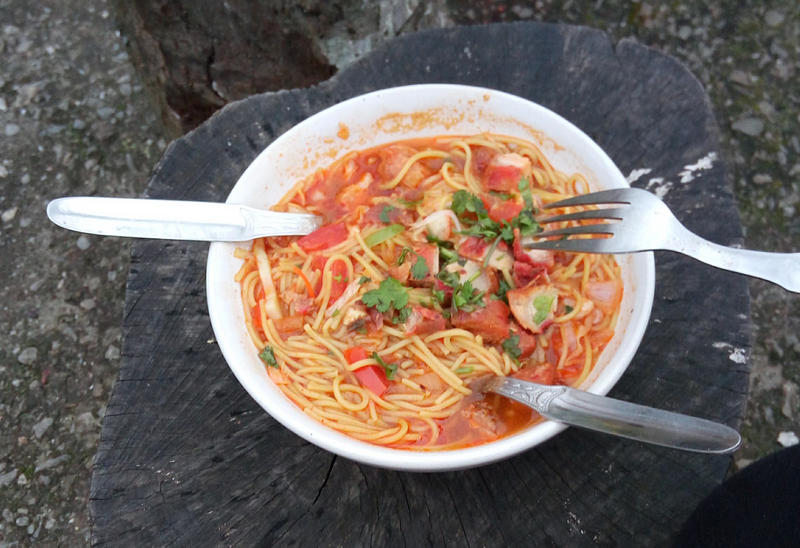
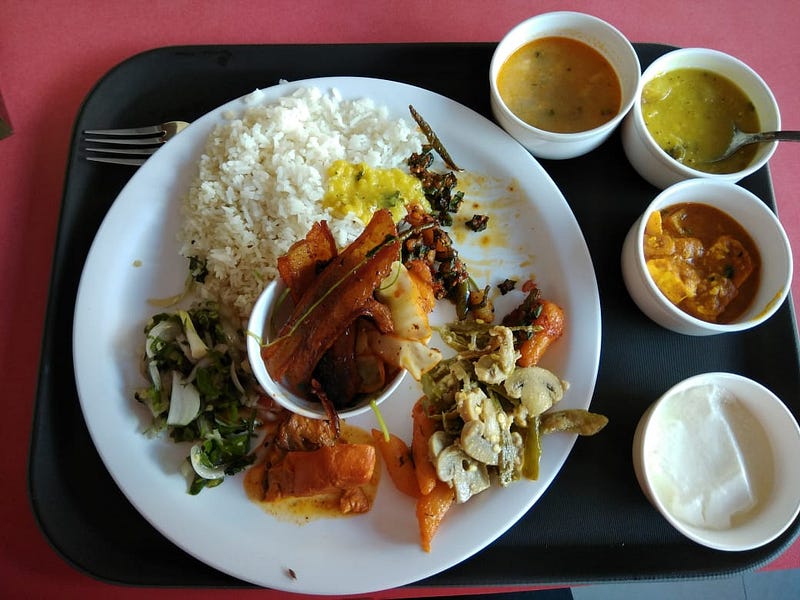
Bhutanese food is made with less spices — a fact that might not settle well with the Indian palette. A few of my friends found it “bland” even after adding lots of salt. For me, however, the food was scrumptious. The locals swear by Ema Datshi, a dish of green capsicum sauteed with cheese. Taken with white rice, this dish can be sampled for the unique taste of Bhutan. Vegetarian momos (dumplings) with cheese are quite popular. In fact, as my hosts informed later, it is rare for a Bhutanese household to not have a slab on cheese in their refrigerators! The dish took my heart away was the Thukpa, or the noodle soup. Every bite is like an explosion of taste and the lush green hills of Thimphu in the background only served in making the dish tastier.
The houses
The AirBnB we stayed in at Thimphu was lush — easily the best hotel I have ever stayed in on such a small budget. The house was covered in plush carpets with minute dragons detailed on them (no shoes were allowed inside). The walls were covered with a variety of masks used in some traditional dances of Bhutan. It also had a cute little library full of books I had never heard about.

(If anyone is looking to book the same place, it’s called the Pema Yoseling Villa in Thimphu)
Overall, Bhutan was a beautiful country and the trip was worth a lifetime of memories. I guess our happy smiles say it all-
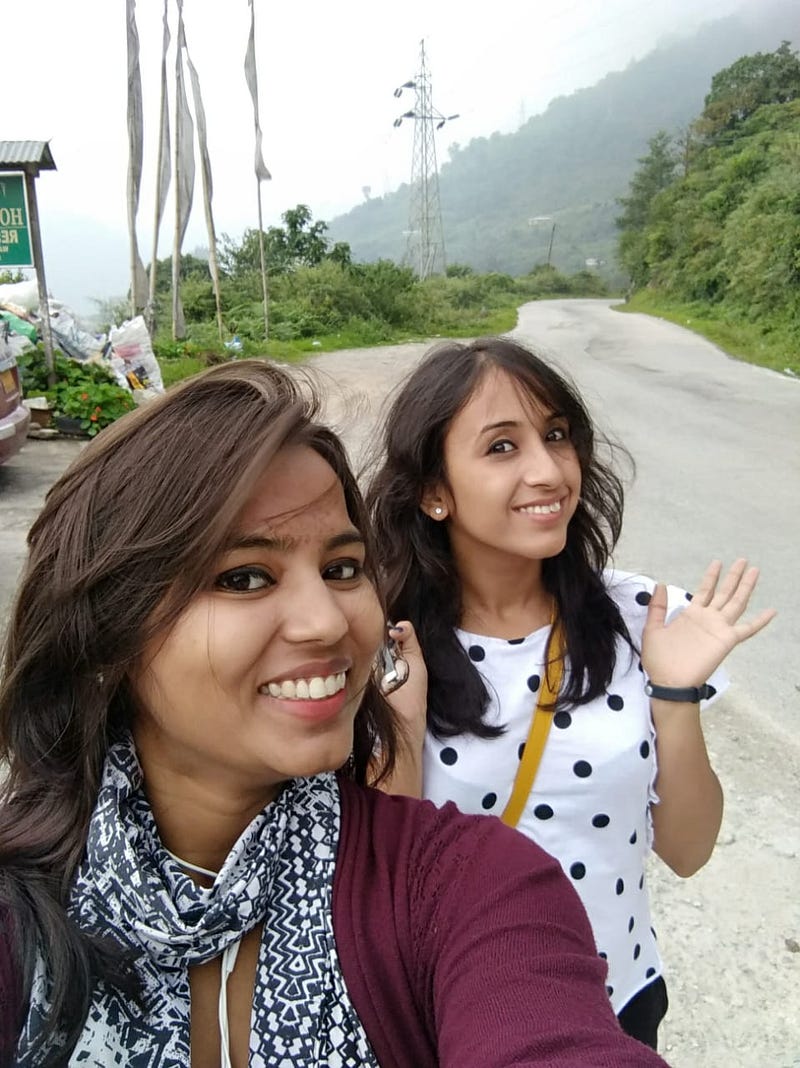
That is my friend Vipasha, by the way. Oh, and I have a whole treasure trove of stories about the adventures the two of us had in the country. So much so, that I decided to write a 4-part series based on the Bhutan diaries. I will be back soon with part 2 of the series.
Till then, keep spreading joy and love. Also, join my email list to keep in touch.
